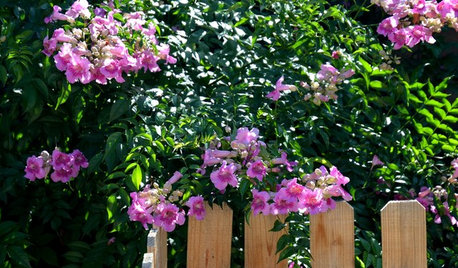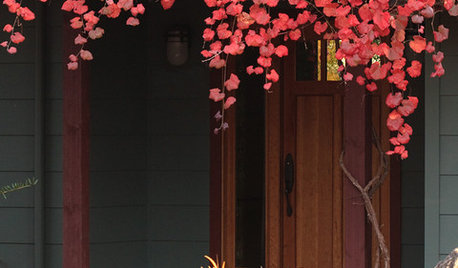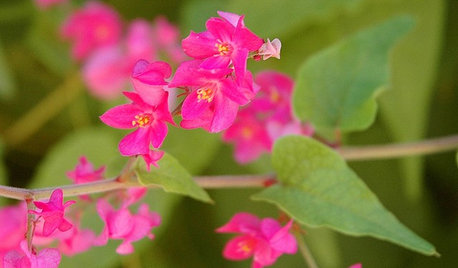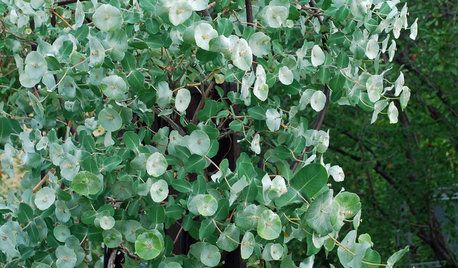vine borer question
ruthieg__tx
14 years ago
Related Stories

KITCHEN DESIGN9 Questions to Ask When Planning a Kitchen Pantry
Avoid blunders and get the storage space and layout you need by asking these questions before you begin
Full Story
Design Dilemmas: 5 Questions for Houzzers!
Post Ideas for Landscaping for a Modern Home, Updating a Rental and More
Full Story
PINK FLOWERSGreat Design Plant: Pink Trumpet Vine Heralds Vibrant Color
Announce your landscape beautification efforts with this flowering vine that perks up hot, dry gardens
Full Story
FOLIAGEGreat Design Plant: Ornamental Sweet Potato Vine
Versatile, fast growing, inexpensive and easy on the eyes, ornamental sweet potato vine has it all
Full Story
RED FOLIAGEGreat Design Plant: 'Roger's Red' California Wild Grape
Lush, vivid and a considerate provider of snacks for wildlife, this deciduous vine is especially spectacular in a fall garden
Full Story
PLANTING IDEASGreat Garden Combo: Rose + Clematis for Small-Space Impact
We all need somebody to lean on. And when a rose supports a climbing vine, the results can totally transform a small garden
Full Story
GARDENING GUIDESGreat Design Plant: Antigonon Leptopus in California and Desert Gardens
Dry climates can enjoy sprays of delicate pink flowers and heart-shaped leaves on this drought-tolerant, summer-flowering vine
Full Story
BLUE AND GRAY FOLIAGEGreat Design Plant: Kintzley's Ghost Honeysuckle
Looking for a versatile plant with beautiful color and texture? This unusual honeysuckle may be just the ticket
Full Story
MOST POPULARThe Perfect Houseplant for People Who Kill Houseplants
If you can fill a jar with water, you can keep golden pothos vine happy — and it will pay you back with cleaner air and a greener home
Full Story
EDIBLE GARDENSSummer Crops: How to Grow Tomatoes
Plant tomato seedlings in spring for one of the best tastes of summer, fresh from your backyard
Full StoryMore Discussions






zeedman Zone 5 Wisconsin
ruthieg__txOriginal Author
Related Professionals
Birmingham Landscape Architects & Landscape Designers · Otsego Landscape Architects & Landscape Designers · Owings Mills Landscape Architects & Landscape Designers · Springfield Landscape Contractors · Fort Myers Landscape Contractors · Northbridge Landscape Contractors · Palm Beach Gardens Landscape Contractors · Rio Linda Landscape Contractors · Severna Park Landscape Contractors · Tewksbury Landscape Contractors · Waterford Landscape Contractors · Baileys Crossroads Landscape Contractors · Crowley Driveway Installation & Maintenance · Albany Driveway Installation & Maintenance · Grand Rapids Driveway Installation & Maintenanceengineeredgarden
zebraman
bella_trix
ribbit32004